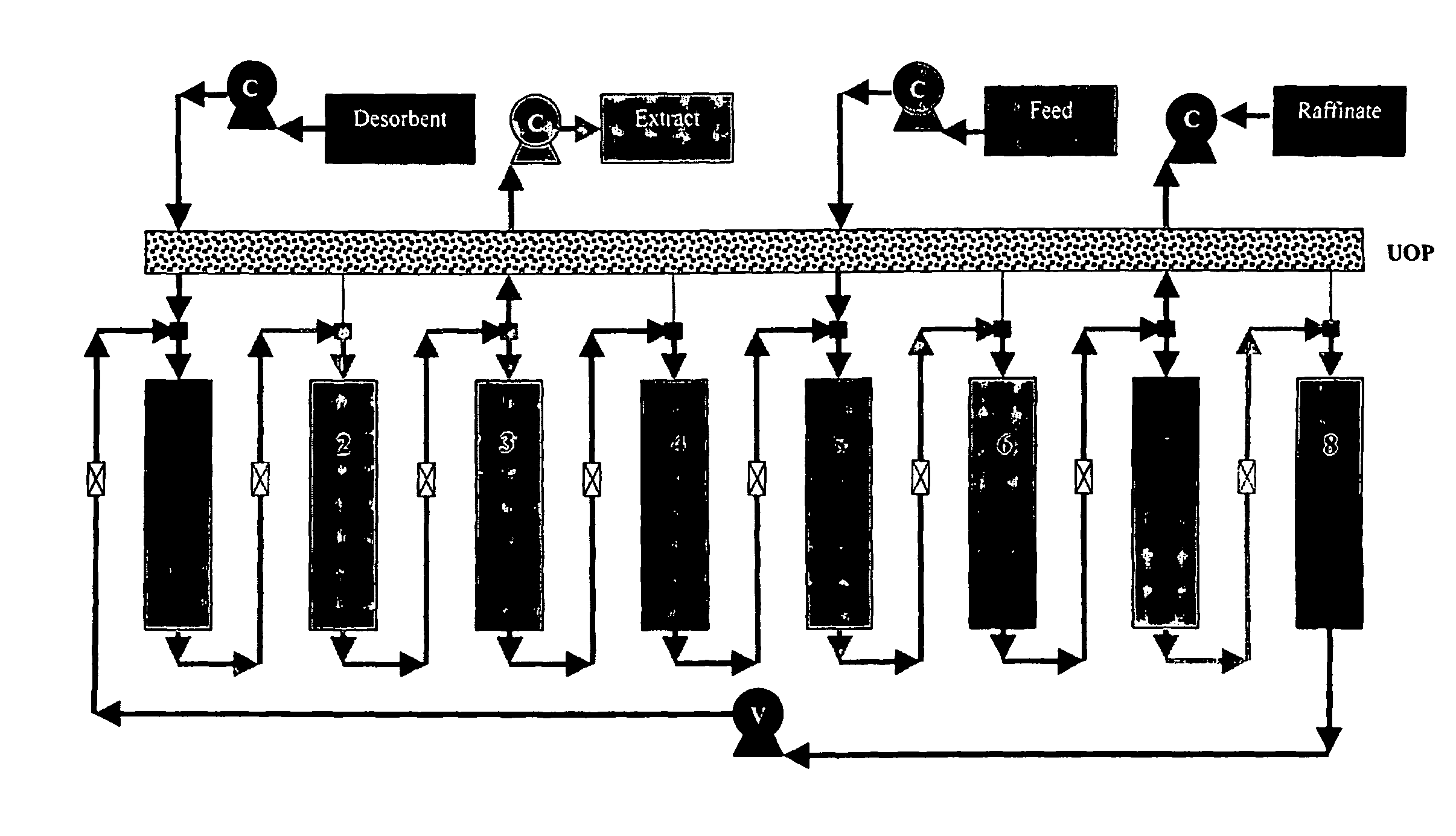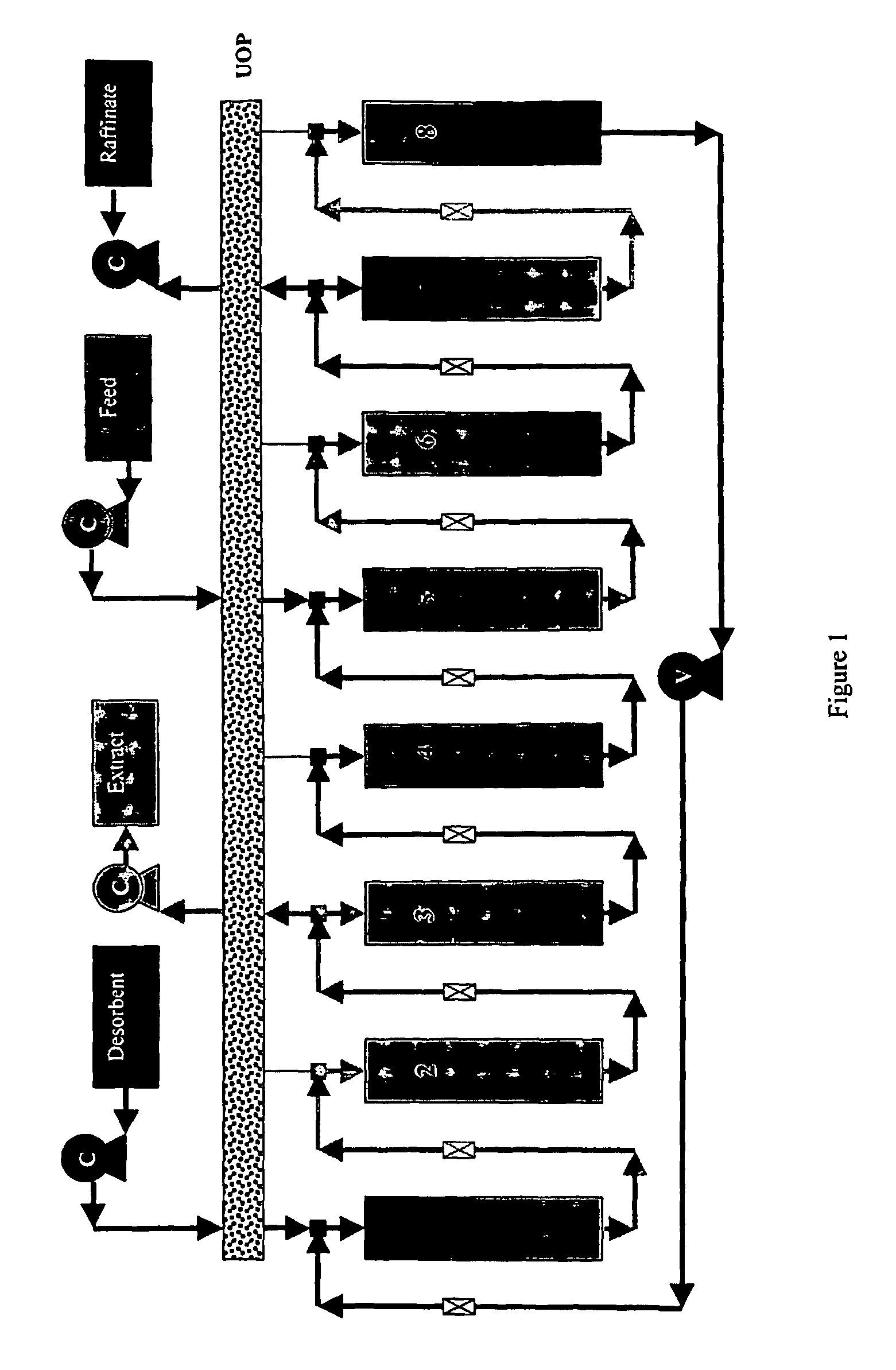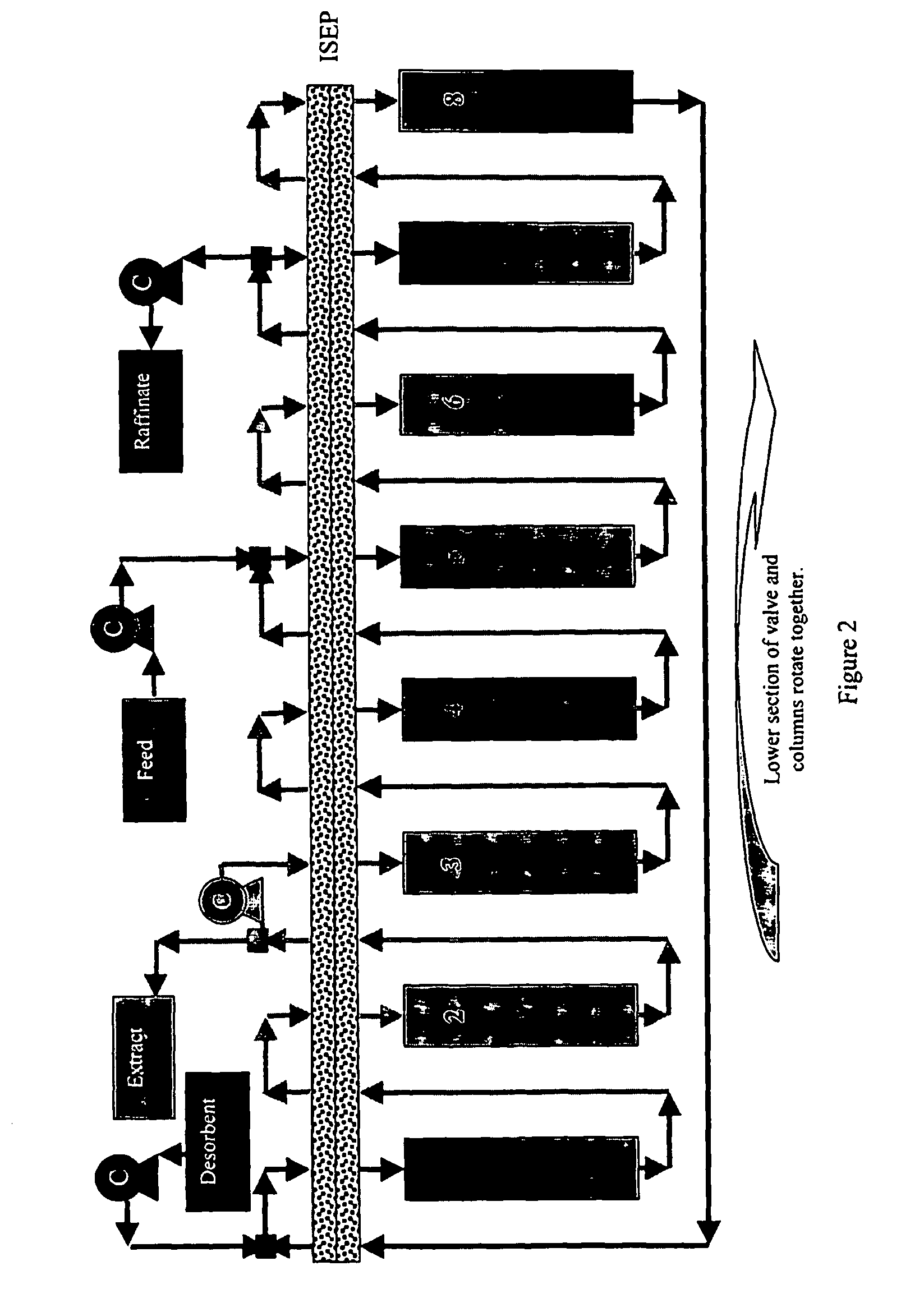Versatile simulated moving bed systems
a technology of moving bed and simulation, applied in the direction of ion exchangers, water/sewage treatment by ion exchange, separation processes, etc., can solve the problems of inability to expand or modify the system to fit different configurations, inability to perform online decoupled regeneration, and inability to disrupt separation profiles
- Summary
- Abstract
- Description
- Claims
- Application Information
AI Technical Summary
Benefits of technology
Problems solved by technology
Method used
Image
Examples
example 1
Phenylalanine-Tryptophan SMB Separation—Experimental Setup and Design
[0173] The first experimental validation runs on the 1ST1C system used the well-understood phenylalanine-tryptophan as its model separation. Values from Xie, (2001) in Table 2 were used to design an appropriate set of operating parameters. The identical desorbent (water) and resin, (PVP) was used. The PVP resin, Reillex HP Polymer from Reilley Industries Inc. (Indianapolis, Ind.), is stable and easily regenerated. The resin was packed via the slurry packing method (Xie, (2001)). Table 3 lists the properties of the resin. The glass columns (30.5×2.68 cm) were obtained from Ace Glass Inc.
[0174] PVP resin was regenerated and repacked for Run 2. Water was pumped at high flow rates (>25 ml / min) through the columns for 24 hours before unpacking. The resin was successively soaked in 1 mol of NaOH, water, 1 mol of HCl, followed again by water, 50% ethanol by volume and finally with water again. Each step lasted 24 hours....
example 2
Online Decoupled Regeneration
[0194]FIG. 46 illustrates a four column, four separation zone SMB with an additional column in an online decoupled regeneration zone. In this example, the regeneration step lasts for 9 regular step times. Between step 1 and 9, column 2 to 4 undergo conventional SMB switching. At the 10th switch, column 1 is switched from the regeneration zone into zone I, and column 2 from zone I into the regeneration zone. A column can be placed into the regeneration zone at regular or varying intervals, or triggered by the detection of fouling in the separation columns, or by other means. A corresponding number of columns need not be replaced when a regeneration switch occurs from the separation zone into the decoupled regeneration zones.
[0195] A mixture of sulfuric acid, xylose and sodium chloride was chosen as a model system to validate the online decoupled regeneration method. Xylose is the middle affinity product, sodium chloride the low affinity impurity and sul...
PUM
| Property | Measurement | Unit |
|---|---|---|
| speed | aaaaa | aaaaa |
| non-instantaneous response time | aaaaa | aaaaa |
| zone lengths | aaaaa | aaaaa |
Abstract
Description
Claims
Application Information
 Login to View More
Login to View More - R&D
- Intellectual Property
- Life Sciences
- Materials
- Tech Scout
- Unparalleled Data Quality
- Higher Quality Content
- 60% Fewer Hallucinations
Browse by: Latest US Patents, China's latest patents, Technical Efficacy Thesaurus, Application Domain, Technology Topic, Popular Technical Reports.
© 2025 PatSnap. All rights reserved.Legal|Privacy policy|Modern Slavery Act Transparency Statement|Sitemap|About US| Contact US: help@patsnap.com



